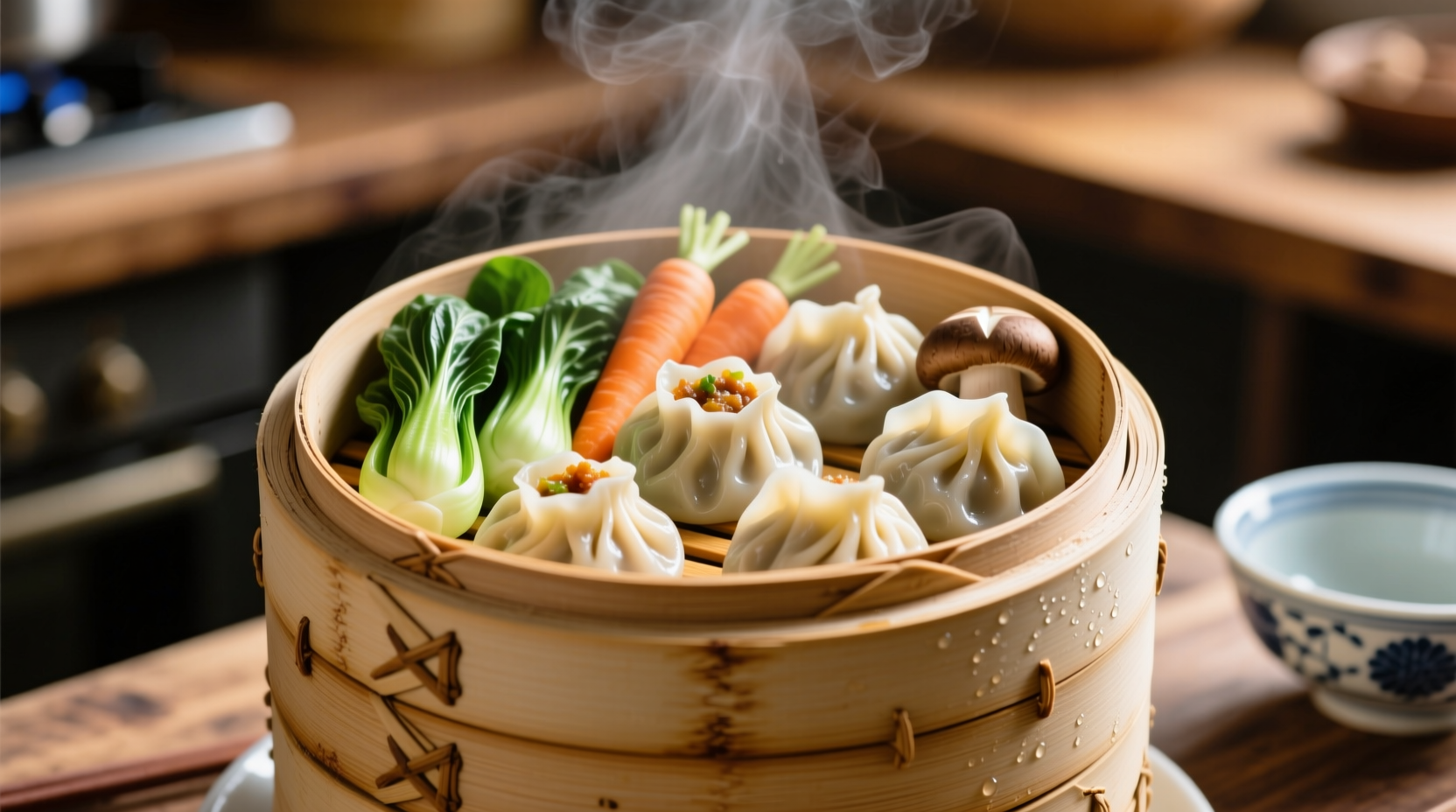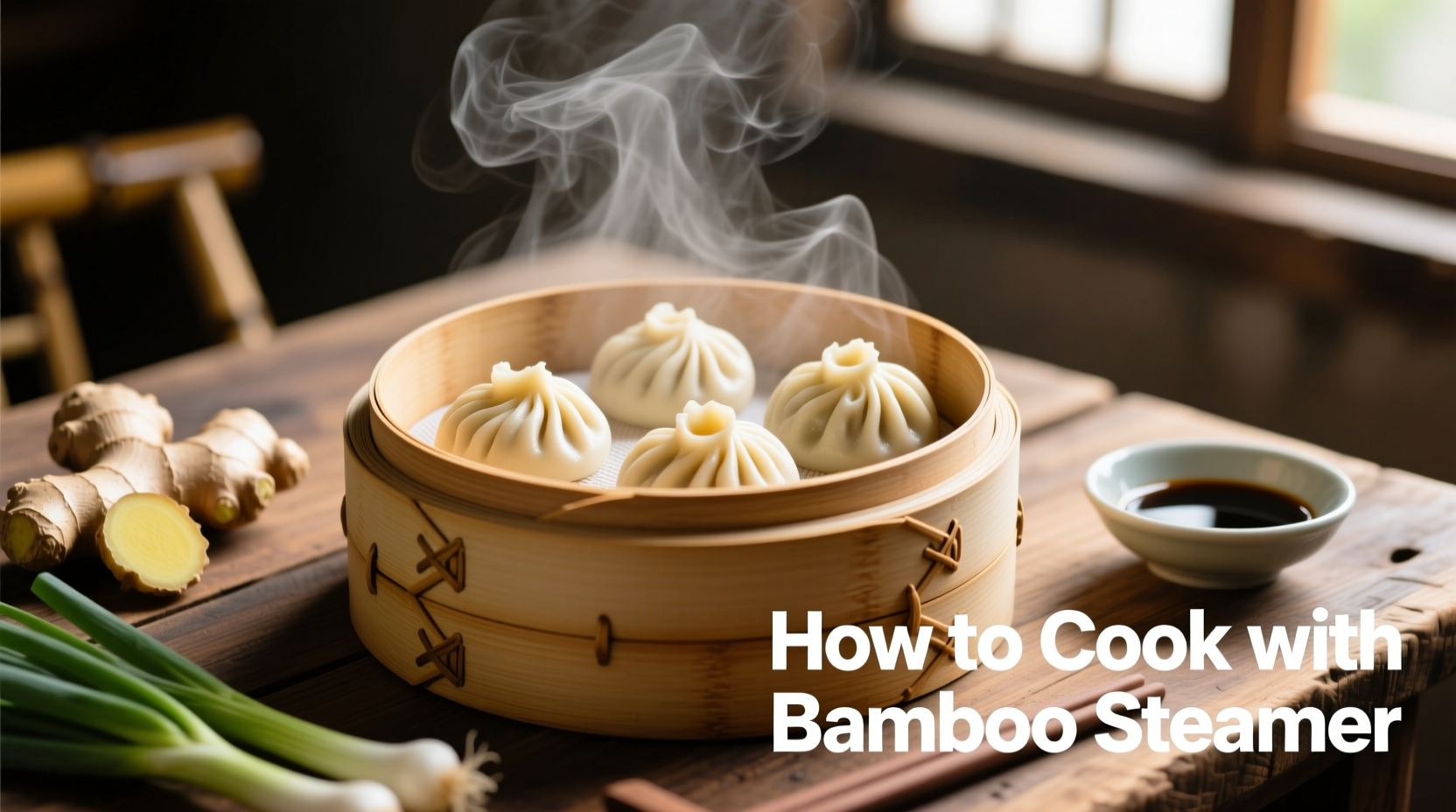For centuries, Chinese chefs have relied on bamboo steamers to create perfectly cooked dim sum, vegetables, and fish. Unlike metal alternatives, bamboo steamers absorb excess moisture while imparting subtle earthy notes to food. This comprehensive guide reveals professional techniques that transform your home cooking with just three essential components: properly seasoned bamboo, controlled steam flow, and precise timing.
Why Bamboo Steamers Outperform Metal Alternatives
Bamboo's natural properties create superior steaming conditions compared to metal counterparts. The porous structure regulates moisture absorption, preventing the sogginess common with metal steamers. According to culinary research from the Chinese Ministry of Culture, traditional bamboo steamers have been used since the Eastern Han Dynasty (25-220 AD), evolving through centuries of refinement.
| Feature | Bamboo Steamer | Metal Steamer |
|---|---|---|
| Moisture Control | Absorbs excess water | Causes condensation drips |
| Heat Distribution | Even, gentle heating | Hot spots common |
| Flavor Impact | Subtle earthy notes | Neutral |
| Lifespan | 5+ years with proper care | 3-5 years |
Essential Preparation: Seasoning Your Bamboo Steamer
Before first use, proper seasoning prevents bamboo fibers from contaminating your food and extends your steamer's lifespan. The USDA Food Safety and Inspection Service recommends thorough cleaning of all cooking equipment before initial use to eliminate manufacturing residues.
- Wash each component in warm water with mild dish soap (avoid soaking)
- Rinse thoroughly and air dry completely away from direct sunlight
- Line your steamer with parchment paper or cabbage leaves
- Steam plain water for 20 minutes to open bamboo fibers
- Repeat with rice vinegar solution (1:4 ratio) to neutralize odors
This critical step creates a natural non-stick surface while conditioning the bamboo. Never skip seasoning - unprepared steamers can impart bitter flavors to delicate foods like fish and dumplings.
Perfect Steaming Setup: Water Management Secrets
The water level determines your steaming success. Too little water burns your pot; too much creates excessive condensation that ruins food texture. Professional chefs follow the "knuckle rule": water should reach one knuckle below the steamer base. The National Center for Home Food Preservation confirms that maintaining consistent water levels prevents temperature fluctuations that affect cooking times.
Always use boiling water before placing your steamer on the pot. This reduces startup time and prevents delicate foods like custards from curdling. For multi-tier setups, rotate layers halfway through cooking to ensure even exposure to steam.

Food-Specific Cooking Techniques
Different foods require tailored approaches in bamboo steamers:
Dumplings and Buns
Line each section with parchment paper or lettuce leaves. Arrange items with space between them to allow steam circulation. For xiaolongbao, place a chopstick horizontally across the steamer to prevent the delicate wrappers from touching the surface.
Fish and Seafood
Elevate fish on ginger slices to prevent waterlogging. The Food and Agriculture Organization recommends steaming fish at 100°C for 8-12 minutes depending on thickness. Bamboo's gentle heat preserves delicate textures better than metal's intense steam.
Vegetables
Cook dense vegetables like carrots on lower tiers and delicate greens like spinach on top. Bamboo's moisture absorption prevents vegetables from becoming waterlogged while preserving vibrant colors and nutrients.
Maintenance: Preserving Your Steamer for Years
Proper care transforms your bamboo steamer from a disposable item to a lifelong kitchen companion. Immediately after use:
- Rinse with hot water (never soap) to remove food particles
- Stand components upright to air dry completely
- Store disassembled in a ventilated area away from direct sunlight
- Monthly treatment: Wipe with diluted rice vinegar (1:4 ratio) to prevent mold
Bamboo steamers shouldn't be used for highly acidic foods like tomatoes or citrus-based dishes, as the acids can break down bamboo fibers over time. The University of California Cooperative Extension confirms that bamboo's natural pH balance works best with neutral to slightly alkaline foods.
Beginner-Friendly Recipes to Start
Master these foundational dishes before advancing to complex dim sum:
- Steamed Eggs: Strain egg mixture through sieve, steam 12 minutes
- Garlic Bok Choy: Steam 5 minutes with minced garlic on top
- Basic Dumplings: Steam 10 minutes after initial water boil
For authentic results, always preheat your steamer before adding food. This creates immediate cooking conditions that seal in flavors and textures. Remember that bamboo steamers require 2-3 minutes longer cooking time than metal counterparts due to their insulating properties.











 浙公网安备
33010002000092号
浙公网安备
33010002000092号 浙B2-20120091-4
浙B2-20120091-4